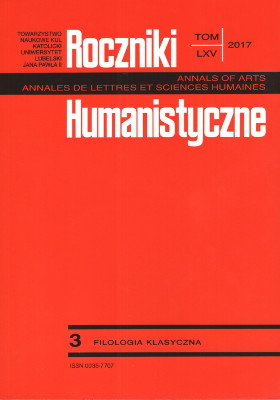Pozostałości liczby podwójnej w języku łacińskim epoki archaicznej
Remains of Dual Number Forms in Archaic Latin
Author(s): Krzysztof Tomasz WitczakSubject(s): Language and Literature Studies, Theoretical Linguistics, Morphology, Philology
Published by: Towarzystwo Naukowe KUL & Katolicki Uniwersytet Lubelski Jana Pawła II
Keywords: dual number; elliptic dual; Latin morphology; Latin fifth declension
Summary/Abstract: The paper describes the possible traces of dual number forms preserved in the Latin language of the archaic period. Certain epigraphic sources of the 2nd century BC contain a total of 23 examples of third declension genitive forms ending in -us or rarely (after labial consonants) -ō̩s (e.g. Castorus, Cererus, Diovos, hominus, nominus, partus, regus, Salutus, Venerus). We can also distinguish genitive plural forms in -ērum (e.g. bovērum, Iovērum, lapidērum, nāvērum, nucērum, rēgērum), which seem to derive from the nominative-accusative du. in *-ē, e.g. bovērum ‘of oxen’ (originally ‘of two oxen’) ← nom.-acc. du. *bovē ‘two oxen’ ← nom. sg. bōs m. f. ‘ox, cow’. The loss of the dual number in the early phase of the development of the Latin language caused massive changes in the Latin declension. Highly specific dual-plural forms of consonant stems characterised by the feature -ē- (cf. *bovē ‘two oxen’, gen. bovērum ‘of oxen’) must have existed within the third Latin declension. Old “petrified” dual forms were generally reinterpreted as plurals (i.e. nom. du. *-ē → nom. pl. -ēs) and sometimes as collectives or singulars. The latter morphological processes led to the formation of the Latin fifth declension.
Journal: Roczniki Humanistyczne
- Issue Year: 65/2017
- Issue No: 3
- Page Range: 37-58
- Page Count: 22
- Language: Polish

